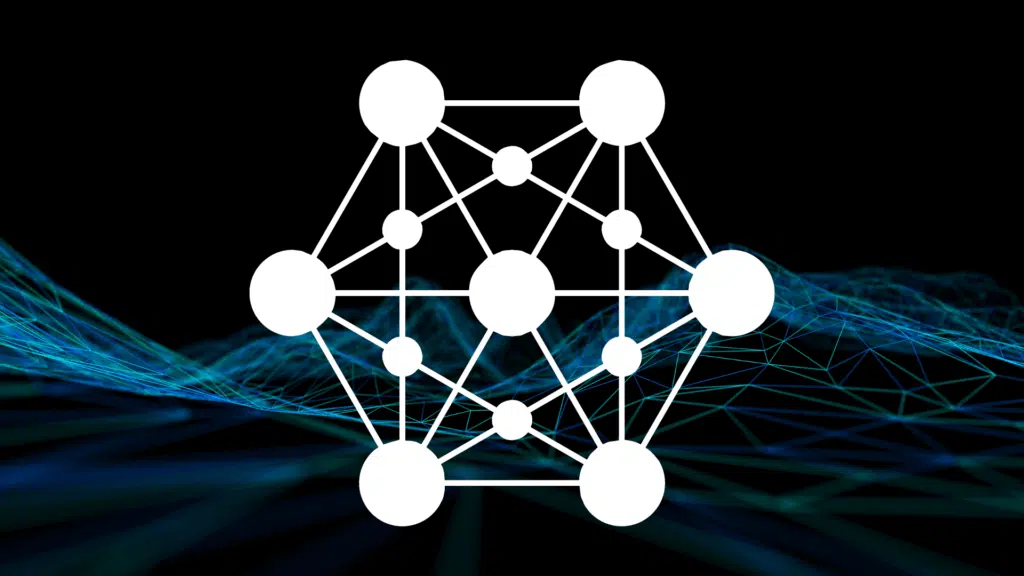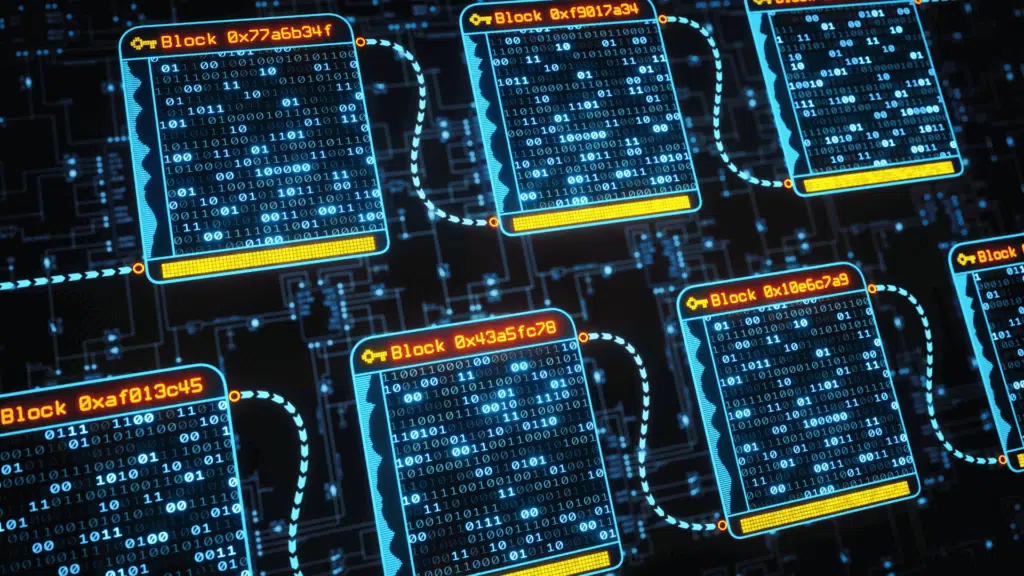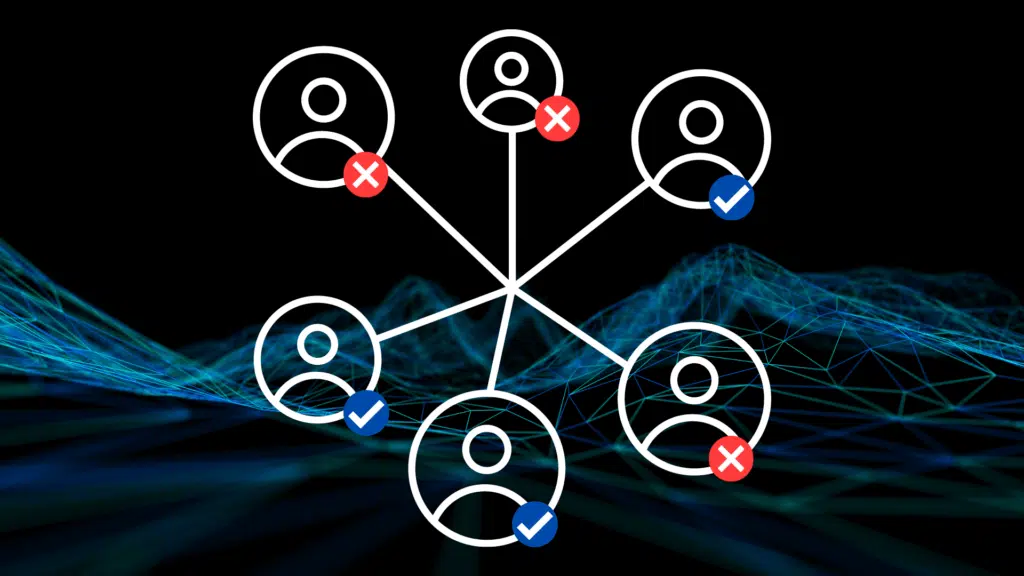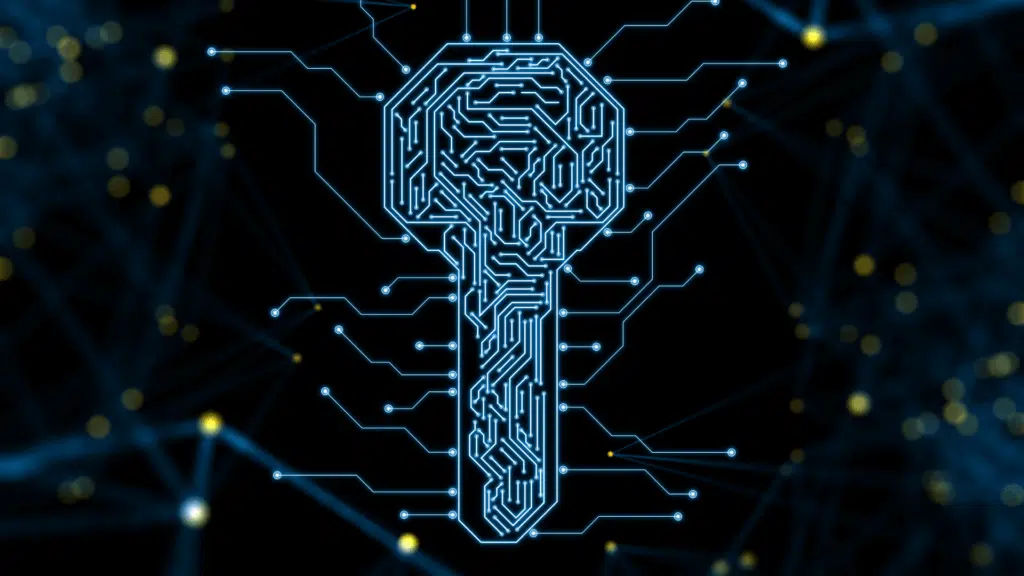Table of Contents
- 1 What is Blockchain Technology?
- 2 Main Components of a Blockchain Network
- 3 What Is a Blockchain Peer-to-Peer Network?
- 4 What Is a Blockchain Node?
- 5 What Is a Blockchain Ledger?
- 6 What Is a Blockchain Wallet?
- 7 What Is a Nonce in Blockchain?
- 8 What Is Hashing (hash) in Blockchain?
- 9 What Are Consensus Mechanisms in Blockchain?
- 10 What are Smart Contracts?
- 11 What is Cryptography?
- 12 Conclusion
- 13 Identity.com
In an era where identity theft, fraud, and high-scale hacking are on the rise, we need a better system to store users’ data. A system that is not prone to a single point of failure (SPOF), a system that shifts its focus from centralization into decentralization. This solution will not only secure and arrange data but also significantly impact global financial systems, education, and users’ privacy. We can discuss blockchain technology as the solution that puts users at the center instead of central authorities, going beyond just a development and becoming a movement. This article aims to describe the components that make the blockchain network possible in the first place.
What is Blockchain Technology?
Blockchain is a distributed database or ledger that is shared among thousands of computers around the world. It maintains a continuously growing list of records called blocks. Computers in this network are called nodes, and these nodes make this possible through a connected network known as the blockchain network.
The blockchain is a distributed network of computers that records information continuously, similar to distributed ledger technology (DLT). Due to the blockchain system’s design, altering data stored on it through the backdoor is impossible. Even the world’s most powerful supercomputer cannot hack or cheat the system. This is because it would require hacking millions of computers across the world.
The blockchain uses cryptography to link its continuously growing list of blocks since all information is stored in blocks. These blocks contain information about previous blocks, known as a “cryptographic hash,” timestamp, and transaction information. The miners’ computing power collectively verifies these pieces of information before adding a new block to the existing list. Adding new blocks to the previous blocks forms a chain of blocks, hence the name “blockchain.” We cannot backdate, deny, or destroy the information stored in these blocks.
Main Components of a Blockchain Network
When multiple components come together, they create a sophisticated entity that ensures “true privacy” and establishes the foundation of decentralized finance (De-Fi). Let’s explore some key blockchain components below with a brief explanation of each:
- Peer-to-Peer Network
- Node
- Ledger
- Wallet
- Nonce
- Hash
- Consensus mechanism
- Smart Contracts
- Cryptography
What Is a Blockchain Peer-to-Peer Network?
Peer-to-Peer (P2P) technology is a critical component of blockchain’s decentralized architecture, which enables participants to interact with each other and conduct transactions without intermediaries or centralized authorities. P2P networks consist of interconnected nodes or devices that communicate with each other, perform transactions, and store transaction records in a transparent, immutable, and unforgeable manner.
Below are different types of P2P network that exists:
- Structured P2P Networks
- Unstructured P2P Networks
- Hybrid P2P Networks
Structured networks have organized data structures, making data access more efficient, but the setup process can be daunting. In contrast, unstructured networks are more flexible, allowing participants to join and leave the network as they please, but they may not be as efficient as structured networks. Hybrid networks combine P2P and traditional client-server models with a central server locating nodes.
To learn more about P2P Networks, click here.
What Is a Blockchain Node?

A blockchain node is a crucial part of a blockchain network, responsible for maintaining the distributed ledger by processing transactions and validating new blocks. These nodes are unique and identified through a unique identifier attached to them. The more nodes a network has, the more decentralized and secure it becomes. There are various types of blockchain nodes, each serving a different purpose, from general to specific.
- Full nodes
- Pruned full nodes
- Archival full nodes
- Staking nodes
- Authority nodes
- Master nodes
- Miner nodes
- Light nodes
- Lightning nodes
To learn more about blockchain nodes, click here for an in-depth discussion.
What Is a Blockchain Ledger?

We can summarize the whole concept of blockchain as a digital and decentralized ledger. A blockchain ledger is a digital record of transactions and data stored in a distributed manner across several computers globally (decentralized). This ledger is a chain of blocks, with each block containing a list of transactions. All computers in the blockchain network have copies of these blocks, ensuring transparency and accuracy of information.
For example, when a user makes a purchase using crypto, a monetary exchange occurs between the customer and the merchant. A majority vote of all users on the blockchain nodes must confirm the validity of this transaction. The two major types of blockchain ledgers are public and private.
Click here for more information on blockchain ledgers, their types, and their benefits.
What Is a Blockchain Wallet?

The emergence of blockchain technology has created a promising solution for the global financial system with the creation of cryptocurrency. Blockchain wallets (digital wallets) actively manage cryptocurrencies, enabling users to hold and perform financial transactions securely. These transactions and their associated records are cryptographically signed, making them more secure than traditional banking systems and protecting the privacy of users’ data.
The users’ private keys are stored in their wallets, which are essential for accessing the cryptocurrency assigned to each individual. While the cryptocurrency remains on the blockchain, the users’ wallets store their data.
Examples of blockchain wallets include Electrum, Coinbase Wallet, CoinDCX, Bitcoin Wallet, Bitcoin Core, Coinomi, Crypto.com Wallet, Ledger Wallet, CoinPayments, and SecuX Hardware Wallet. Below is a list of different crypto wallets:
- Web wallets
- Mobile wallets
- Desktop wallets
- Paper wallets
- Hardware wallets
Read more on blockchain wallets to understand the different types of wallets in the market, their security, and their vulnerability levels.
What Is a Nonce in Blockchain?
A nonce is a number that miners must solve to add a new block to the blockchain. Before adding a new block, a miner must obtain the nonce number, which can only be used ONCE to create the block. Once a miner adds a block with a valid nonce, they receive a reward, making it impossible for a previously recorded block to be recorded multiple times.
Nonce is similar to a one-time password (OTP) that miners must solve, but instead of being sent by a financial institution, miners must solve for it. The tedious process of obtaining the number is called “proof of work” in blockchain consensus mechanisms.
Nonce is derived from the phrase “number used only once,” which is a portmanteau of two or more words. Other examples of portmanteau include “brunch” (breakfast + lunch), “alphanumeric” (alphabetic + numeric), “motel” (motorist + hotel), and “internet” (interconnected + network). The chance of correctly guessing the nonce for each block is nearly zero, with millions of possibilities for just one nonce. This requires high computational power from miners, with only one winner emerging from the contest. Despite its seemingly basic explanation, nonce remains one of the essential security features of blockchain technology.
What Is Hashing (hash) in Blockchain?
Hashing uses a mathematical function called a “Hash Function” to create a fixed value length from texts or numbers. This helps protect the content of messages during transmission. The blockchain ecosystem uses this technology when cryptocurrency is sent between users.
When sending cryptocurrency from one user to another, the system applies a hashing algorithm to produce a fixed-length alphanumeric output. The leading cryptocurrency, Bitcoin, uses the Secure Hash Algorithm (SHA) 256 hashing algorithm, which produces a 256-bit output regardless of the input data’s length. The beauty of hashing is its ability to detect even the smallest change in a file, such as capitalization. You can see the difference in hash value using the SHA-256 hash calculator in the examples below:
| Input | Hash Output |
| decentralized identity | 2b0d05bc0a0767cc02a174dfe471a037e6f11b4fb266c909f9e60a59723d4c8a |
| Decentralized identity | b51c674a6a5093921f4189c4481f8eae7d79d7b4fadc34f80d9ce7b1a8c90d22 |
Read more on hashing in blockchain to understand the different attributes of cryptographic hash functions.
What Are Consensus Mechanisms in Blockchain?

Traditional financial institutions rely on central authorities to protect their transactions and keep their systems running. However, in a decentralized system, achieving consensus can be challenging, which raises questions about how to maintain the blockchain’s security and preserve all transaction records.
To achieve consensus in blockchain, a stack of protocols, incentives, and systems enable a network of nodes to agree on transactions and the state of the blockchain, creating a democracy or governance approach that keeps the blockchain secure and functional. This mechanism is the foundation of cryptocurrencies like Bitcoin, Ethereum, and Cardano, maintaining the security of blockchains while validating the authenticity of transactions.
Independent nodes can verify transactions and update the ledger depending on the consensus system applied by each blockchain. Consensus mechanisms can vary, with some nodes updating the blockchain records based on work done, others based on stakes, and some based on authority. The following are some types of consensus mechanisms used in the blockchain ecosystem, with the possibility of more emerging in the future:
- Proof of Work (PoW)
- Proof of Stake (PoS)
- Delegated Proof of Stake (DPoS)
- Proof of Capacity (PoC)
- Proof of Activity (PoA)
- Proof of Authority (PoA)
- Proof of Importance (PoI)
- Proof of History (PoH)
- Proof of Burn (PoB)
- Proof of Elapsed Time (PoET)
Click here to learn more about each consensus mechanism.
What are Smart Contracts?

Smart contracts are computer programs or codes that automatically execute when a party meets agreed terms or conditions. The lines of code that form the smart contract explicitly contain the terms of the agreement, which are stored on the blockchain.
Smart contracts are a vital component of blockchain technology. They enable trustless and permissionless financial transactions between users, eliminating the need for an intermediary. Smart contracts use “IF-THEN” programming language semantics to send, store, and receive funds based on specified code conditions.
To learn more about the benefits and applications of smart contracts in different fields, check out this short piece on smart contracts.
What is Cryptography?

Cryptography utilizes computer algorithms to safeguard data, ensuring that only the intended recipients can access the content. This technology disguises and renders messages unreadable through communication channels using mathematical algorithms.
Most popular blockchains or cryptocurrencies operate on public blockchains without centralized servers or high-tech firewalls/protections. They also operate on peer-to-peer networks, which might suggest vulnerability to attacks or hacks. However, blockchain is one of the greatest and most secure inventions of the 21st century, thanks to cryptography and other technologies. Find out more about cryptography, its attributes, types, and applications here.
Conclusion
In this article, we’ve explored the nine key components of a blockchain system. We’ve seen how each component plays a crucial role in ensuring the integrity, security, and efficiency. The blockchain system is designed to securely and transparently exchange value. It uses cryptographic algorithms to secure data and a decentralized network of nodes to validate transactions, ensuring that it is tamper-proof and reliable. As the blockchain industry grows and evolves, its components will also improve. Staying up-to-date with the latest developments is crucial for leveraging the full potential of this innovative technology.
Identity.com
Blockchain is the future, and it is impressive to see Identity.com contributing to this desired future through the Solana ecosystem and other Web3 projects. Also, as a member of the World Wide Web Consortium (W3C), the standards body for the World Wide Web.
The work of Identity.com as a future-oriented company is helping many businesses by giving their customers a hassle-free identity verification process. Identity.com is an open-source ecosystem providing access to on-chain and secure identity verification. Our solutions improve the user experience and reduce onboarding friction through reusable and interoperable Gateway Passes. Please refer to our docs for more info about how we can help you with identity verification and general KYC processes.

